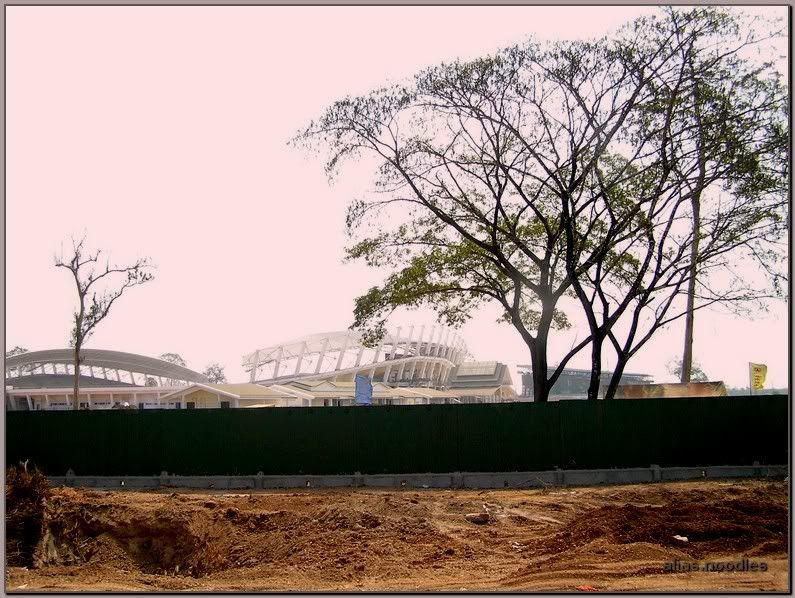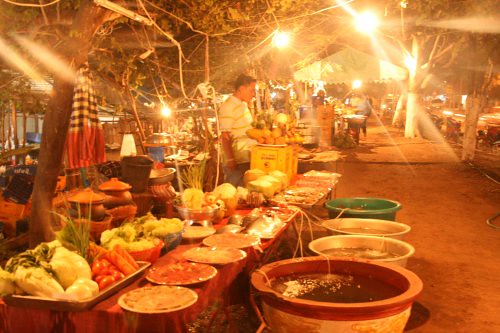
The Lao National Sports Committee (LNSC) is seeking a further 30 billion kip to boost the national team's preparations for the 25th SEA Games, to be held in Vientiane from December 9-18.
A budget of 50 billion kip has already been approved.
The LNSC announced it would seek the increase, to a total of 80 billion kip, at a meeting held at the Prime Minister's Office on Friday.
The meeting was held to discuss the progress of sports complex construction, food provision, tours, security, transportation, athletes' preparations for the games and other related issues.
It was attended by Standing Deputy Prime Minister and Chairman of the Lao SEA Games Organising Committee Mr Somsavat Lengsavad, Minister to the Prime Minister's Office and LNSC President Dr Phouthong Seng-akhom and senior officials from each sports federation.
Mr Somsavat Lengsavad said construction of sports venues was on track.
However, preparations to ensure Laos had the best possible results from its elite competitors and their teams was proving more of a challenge.
He said progress was being made on issues ranging from accommodation to training upgrades for referees and match officials.
Several teams will stay at live-in training camps after the Lao New Year festivities.
Meanwhile, Vientiane hotels and tour operators are preparing for an influx of official guests and visitors during the games.
Mr Somsavat said the Lao World Company would be responsible for providing food during the games and food imported from other countries would be banned.
He said agencies' work to coordinate preparation efforts was improving, and the LNSC hoped to continue working effectively to ensure smooth preparations for Lao athletes as they get ready to compete on home soil.
The LNSC, Chinese advisors and Lao officials would continue working together through the construction phase of the sports complex until the games were over.
The Ministry of Information and Culture promised to be ready with 8,000 performers for the opening and closing ceremonies.
Meanwhile, Naxaithong district's Sports Training Centre martial artists still require important equipment for training and competition
Currently in training at the centre are 30 Lao boxers, 20 wushu tao lu fighters, 34 taekwondo fighters, 25 pencak silat fighters, 23 wrestlers and 18 archers.
From the end of this month, they will be joined by their counterparts from the provinces, who will take up residence in the training centre in Sikeuth village, where they will also take part in warm-up competitions and other events.
Meanwhile, the National University of Laos will host 34 petanque players and trainers at its purpose-built centre. The team will live on-site during training.
Twenty-nine muay lao fighters and trainers will train and live at the Sokxay camp, while 19 table tennis players and trainers will be accommodated at the Lao Table Tennis Federation's live-in training centre.
The 29 judo fighters and trainers are in preparation at the national camp and living at the Lao Judo Federation's own accommodation.
At the 24th SEA Games in Thailand in 2007, the Lao team won five gold medals in petanque, judo and muay events, seven silver medals in taekwondo, wushu, judo, boxing and muay events, and 32 bronze medals in muay, sepak takraw, wrestling, taekwondo, wushu, petanque, judo, boxing, karatedo, pencak silat and rugby.
The 25th SEA Games will feature competitions in athletics, swimming, diving, water polo, archery, badminton, billiards and snooker, boxing, cycling, football, golf, judo, karate-do, sepak takraw, shooting, table tennis, taekwondo, tennis, volleyball, beach volleyball, weight lifting, wrestling, wushu, muay, pensak silat, petanque, fin swimming and shuttlecock.
By Sangkhomsay Bubphanouvong









